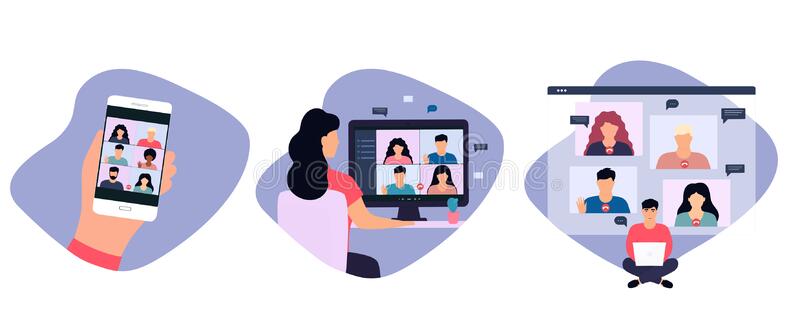Video conferencing has become something of a standard in the workplace ever since Coronavirus sent us all into lockdown in March/April of 2020. While we’ve come back out into the world since then, the virus is still about, and has claimed thousands of lives. It’s for this reason that many schools, businesses, and other organizations have chosen to keep their doors closed and instead connect via video conferencing services. It’s arguable that video conferencing software is largely responsible for keeping the world together through this crisis.
Imagine a world, our modern world, without video conferencing tools. There’s a good chance we’d have seen far more businesses going under, and schooling would be a nightmare. Video conferencing services are a necessary tool for modern business, and they’ve even helped to improve the remote experience for new and veteran remote workers.
For those transitioning from the office to working from home, it wasn’t always easy. Let’s take a look at how video conferencing has improved working remotely.
Reducing Isolation
One of the most profound effects the pandemic has had on us as people is the feelings of isolation it has generated. Being confined in our homes for months on end hasn’t been good for our general mental health; the CDC reports that around 40% of adults have struggled or are struggling with mental health/substance abuse issues since the pandemic began. This alarming statistic brings to light one very important aspect of human life: we need each other. While many of our ideas are focused on “rugged individualism”, in the end, we just can’t get by without other people.
With video conferencing software, we haven’t been so alone. It’s one thing to hear a friendly voice over the phone, but actually seeing that person’s face can inspire feelings of love, joy, and relief. Imagine not seeing the person you love the most for weeks or even months on end. It’s not hard to picture the kind of effect that would have on any of us. With video conferencing, we’ve been able to stay connected, and it’s shown us that we miss things we never thought we would.
You probably never imagined you’d actually miss Dave from accounting, until you see his face on the company conference call after weeks in isolation. The bottom line is that video conferencing helps us to stay connected, which means we don’t have to feel like we’re fighting alone. That’s a terrible feeling to experience all the time!
Improving Communication And Collaboration
We often forget or overlook the fact that communication is largely based on body language, and only a small percentage of our communication is done via vocalization. With video conferencing, we get to keep communicating effectively as if the person we’re talking to is in the same room. Of course, when you’re communicating well, you’re also collaborating better. Teams that communicate effectively will almost always have better luck completing projects on time, reaching goals, and going above and beyond the requirements.
If you’re a manager or team leader looking to improve team communication, starting with a weekly video conference might be the right path. Yes, everyone hates having to be on video, but we’re all adults—we can ignore the minor inconvenience of being seen at an unflattering angle for the sake of the team, right? Weekly video meetings help establish where everyone’s at, where they should be, and where they want to be. This is crucial to creating a cohesive, productive, and effective team.
Extending Reach And Talent Pools
Part of working remotely as a manager can mean having to hire remotely. It’s much tougher to sift through candidates when you can’t actually meet them in-person, but even with remote teams pre-pandemic, we couldn’t always meet in-person. Video conferencing helps to bridge that gap, and greatly extends the reach of our talent pool. You can interview someone across the globe with the press of a button, which has the potential to connect you with some very diverse and capable talent from around the world.
The more diverse your team is in terms of background, race, sex, and talent, the more rich your company culture will be. Employees pay attention to company culture, and it can seriously affect their work performance for good or ill. When everyone feels equal, included, and appreciated, you’re cultivating a world-class team.
Cutting Costs
Working remotely has had some profound financial consequences for businesses as well, but they’re good consequences. When people aren’t at the office all day, the cost of keeping a physical building clean and operational drops significantly. Not to mention, your employees are saving money by not having to commute on a daily basis. In the wake of a pandemic, we can all afford to cut costs a bit.
With reduced overhead and increased productivity, remote work has the potential to completely revolutionize the way businesses operate. The jobs we’ve been told couldn’t be done at home suddenly can be, and the future of the workforce is looking more and more like a mostly-remote one.
The Bottom Line
Remote work can be just as or even more effective than traditional work models, and with video conferencing, you have all the tools you need to cultivate the perfect team. Remember that diversity is important to company culture, communication is crucial to the team’s efforts, and having the right tools for the team can literally mean the difference between success and failure.



